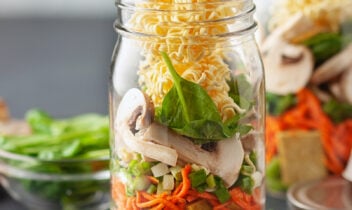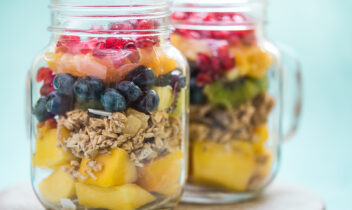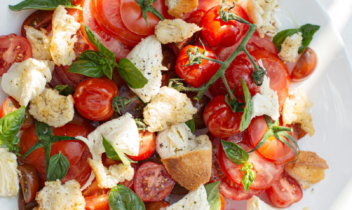Cooking and eating healthfully in a dorm room can present unique challenges. Space is often limited, and dorm kitchens, if available, may be shared and not always convenient. Adding to the struggle, most dorms only allow the basics – a microwave, mini-fridge, and possibly a blender or rice cooker.
Eating produce, in any form, is essential for college students because it provides vital nutrients crucial for both physical and mental health. Whether fresh, frozen, dried, canned, or as 100% juice, fruits and vegetables offer vitamins, minerals, fiber, and antioxidants. These nutrients support energy levels, enhance cognitive and immune function, and help students handle the demands of academic, work and social life.
Here are some tips to properly store and incorporate the various forms of produce into delicious dorm room eats:
Fresh: offers excellent flavor and crunch perfect for meals and snacks. Some varieties like berries, grapes, carrots, leafy greens, and precut fruits and vegetables should be kept refrigerated. Many university cafeterias offer grab-and-go options like bananas, apples and oranges.
- Ways to use: snacking, with dips or nut butters, whisk eggs and add prechopped peppers, onions or cherry tomatoes to a microwave safe mug for an easy omelet, make a fruit and yogurt parfait, add leafy greens and sliced veggies into a wrap or sandwich
Frozen: is a convenient and long-lasting option that retains most of its nutrients. Many brands offer a variety of single fruit/vegetable, mixed, smoothie blends, and seasoned options. As most dorm fridges are small, space may be limited for these options.
- Ways to use: Smoothies, thaw berries over hot oatmeal, microwave quinoa and veggie blends for a quick meal, add a handful of frozen veggies into cooked ramen and other soups
Dried: is highly portable, have a long shelf life, and are great for snacking. Options include raisins, apricots, mango, dates, prunes, apple chips and freeze-dried fruits.
- Ways to use: make your own trail mix, add to oatmeal, stuff dates with peanut or almond butter, combine rolled oats, seeds, honey, and dried fruit for easy energy bites.
Canned: is shelf-stable, affordable, and ideal for creating meals with minimal prep. Look for “packed in 100% juice” for canned fruits and low sodium vegetables and beans.
- Ways to use: combine canned black beans, corn, and diced tomatoes for an easy dip, snack on canned fruit like mandarin oranges and peaches or pop the individual cups in the freezer for a cold treat, make hummus with chickpeas or other beans, make microwave ‘nachos’ and top with canned beans and salsa, top rice cakes with cottage cheese and canned sliced pineapple or peaches
100% juice: convenient and hydrating – there are tons of fruit, vegetable, and combination juices available. Be sure to look for 100% Juice above the Nutrition Facts Label.
- Ways to use: as a base for smoothies, cooking grains in a rice cooker, or as a refreshing drink on their own.
By utilizing all types of produce, college students can enjoy a diverse and balanced diet, even within the constraints of dorm room living.



